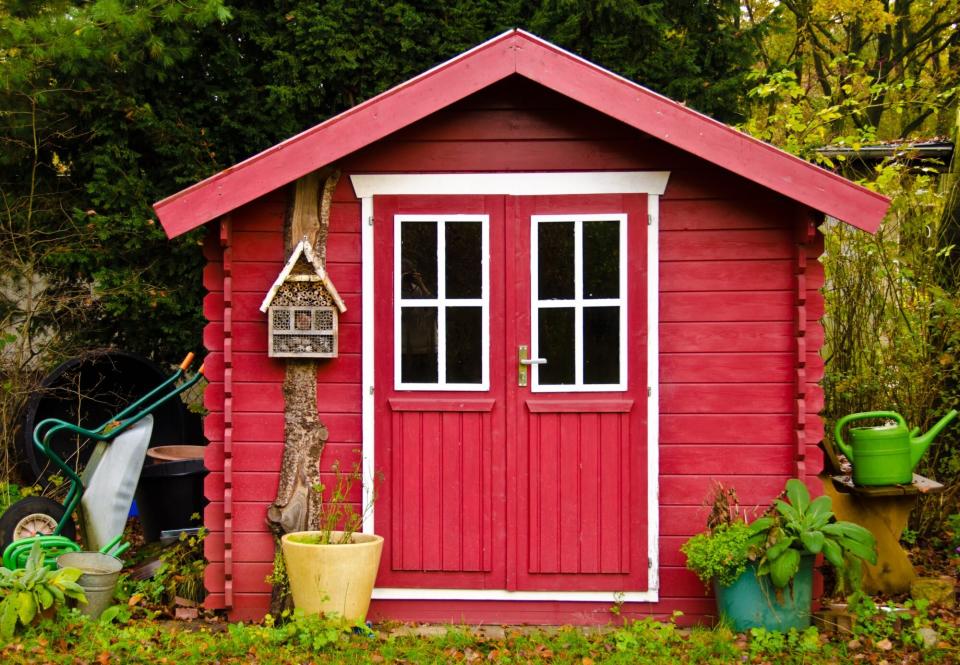How to Animal- and Pest-Proof Your Shed
Whether your outdoor shed is your private oasis or an actual working space full of garden gear and lawn equipment, you don't want unwanted critters (of the pest or animal variety) near it. Still, come wintertime, many animals looking to escape the cold might view your shed as a safe, warm haven; during summer, garden bugs might slither their way in, too. The secret to keeping curious creatures out of your shed year round? Making this space an undesirable place to visit. Ahead, how to do just that, according to our experts.
Related: How to Rid Your Garden of Five Common Summertime Pests

Brinja Schmidt / Getty Images
Secure shed openings with wire mesh.
A wire mesh fence-like structure will secure openings and is your first line of defense to fortifying your shed in the colder months, notes Cinthia Milner, a landscape consultant at B. B. Barns Garden Center and Landscape Company in Ashville, North Carolina. "First, clear out the underside of the shed so that it isn't too cozy. No rocks, old timbers, paint cans, or anything that creates a hospitable environment," she says. "Then, secure the opening with the welded mesh (not chicken wire—it isn't strong enough, in my opinion). It can also be closed in with concrete blocks or siding, but I prefer to have a way to see under the shed and have the airflow." Another alternative to keeping animals away from your shed? Steel wool (critters don't like it!), which you can apply using the same method.
Keep your space clean and clutter-free.
Year round, prioritize keeping your shed clean and streamlined. "Your best bet is good, old-fashioned cleaning. Don't load the shed down with all your extra junk (just garden tools!)," says Milner, "and don't leave your half-eaten sandwich from lunch in there, either." Since chemical pest control repellents only work 50 percent of the time, keeping food, junk, and excess debris in check is a more successful method to animal- and pest-proofing this outdoor dwelling. This also means storing birdseed—as well as dog or cat food—elsewhere.
Organize the area with plastic bins.
Ben Gordon, a landscape designer and the owner of Metropolitan Garden and Design, notes that small animals love to seek warmth in little nooks and crannies, such as cardboard boxes. To avoid visitors, however minuscule, store all of your shed equipment inside sealed plastic bins. "Grass seed is a target for pests and should be sealed tightly," adds Gordon.
Take action if you find signs of life inside your shed.
You took all of the precautions, but a persistent pest still found its way inside your shed—what should you do to remove it? Gordon notes that setting a trap-and-release cage is the best way to stop an animal without harming to it. "Once you've caught your pest, you'll need to relocate it," he says. "It makes sense to take them at least a couple miles away from your shed, as they can find their way back if you're not careful." However, if you have a true pest or rodent control issue inside this outdoor space, our experts suggest reaching out to a professional, who will be able to take a more aggressive approach.

